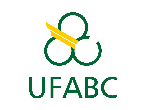Banca de DEFESA: FLAVIA GONCALVES LOBO
Uma banca de DEFESA de MESTRADO foi cadastrada pelo programa.STUDENT : FLAVIA GONCALVES LOBO
DATE: 24/05/2023
TIME: 14:00
LOCAL: A definir
TITLE:
INFLUENCE OF THE THERMAL VARIABLES OF SOLIDIFICATION ON THE MICROSTRUCTURE AND PROPERTIES OF THE Cu-24Zn-6Al-4Mn-3Fe ALLOY
PAGES: 125
BIG AREA: Engenharias
AREA: Engenharia de Materiais e Metalúrgica
SUBÁREA: Metalurgia Física
SPECIALTY: Estrutura dos Metais e Ligas
SUMMARY:
The conditions used during the solidification process of a metal directly affect the microstructural characteristics of the material, such as: dendritic spacing, chemical composition heterogeneity and phase formation. As a consequence of these variations, the mechanical, chemical and physical properties are also altered. This work aims to evaluate the influence of thermal solidification variables in the Cu-24%Zn-6%Al-4%Mn-3%Fe alloy on the microstructure, hardness, microhardness and corrosion resistance. The alloy was solidified in a device with an ascending heat flow system, the heat being extracted through a water-cooled ABNT 1020 steel interface. After obtaining the solidified material, it was subjected to cuts via wire erosion for analysis in each position controlled via thermocouples. The microstructure was analyzed via optical microscopy, scanning electron microscopy and X-ray diffraction in order to characterize the phases and intermetallics present in the material. The mechanical properties were evaluated by means of a hardness and microhardness test along the entire longitudinal extension of the solidified piece, while the corrosion analysis was carried out using the linear potentiodynamic polarization method. All analyzes were correlated with thermal solidification variables in order to understand their influence on the behavior of the studied alloy. The results showed when moving away from the heat exchange base there is an increase in hardness and microhardness, which may be related to the increase in size and phase fraction κ with the decrease in the cooling rate, as analyzed via optical microscopy and scanning electron microscopy. The κ phase has high levels of iron and aluminum, with lower levels of manganese and silicon. In addition, in all positions there was no significant change in the amount of retained α phase, with the matrix mainly composed of β phase and a small amount of approximately 2% of α phase. Linear potentiodynamic polarization tests showed that lower cooling rates provide more unstable samples, with lower corrosion potentials and higher corrosion rates, which may be related to the greater microstructural heterogeneity of the samples when moving away from the heat exchange base, due to to the greater tendency of galvanic coupling between the matrix and the κ phase rich in iron and aluminum.
COMMITTEE MEMBERS:
Presidente - Interno ao Programa - 1893637 - ALEJANDRO ANDRES ZUNIGA PAEZ
Membro Titular - Examinador(a) Interno ao Programa - 3068039 - MOHAMMAD MASOUMI
Membro Titular - Examinador(a) Externo à Instituição - GIVANILDO ALVES DOS SANTOS - IFSP
Membro Suplente - Examinador(a) Interno ao Programa - 1282172 - ROBERTO GOMES DE AGUIAR VEIGA
Membro Suplente - Examinador(a) Interno ao Programa - 1671292 - SYDNEY FERREIRA SANTOS




